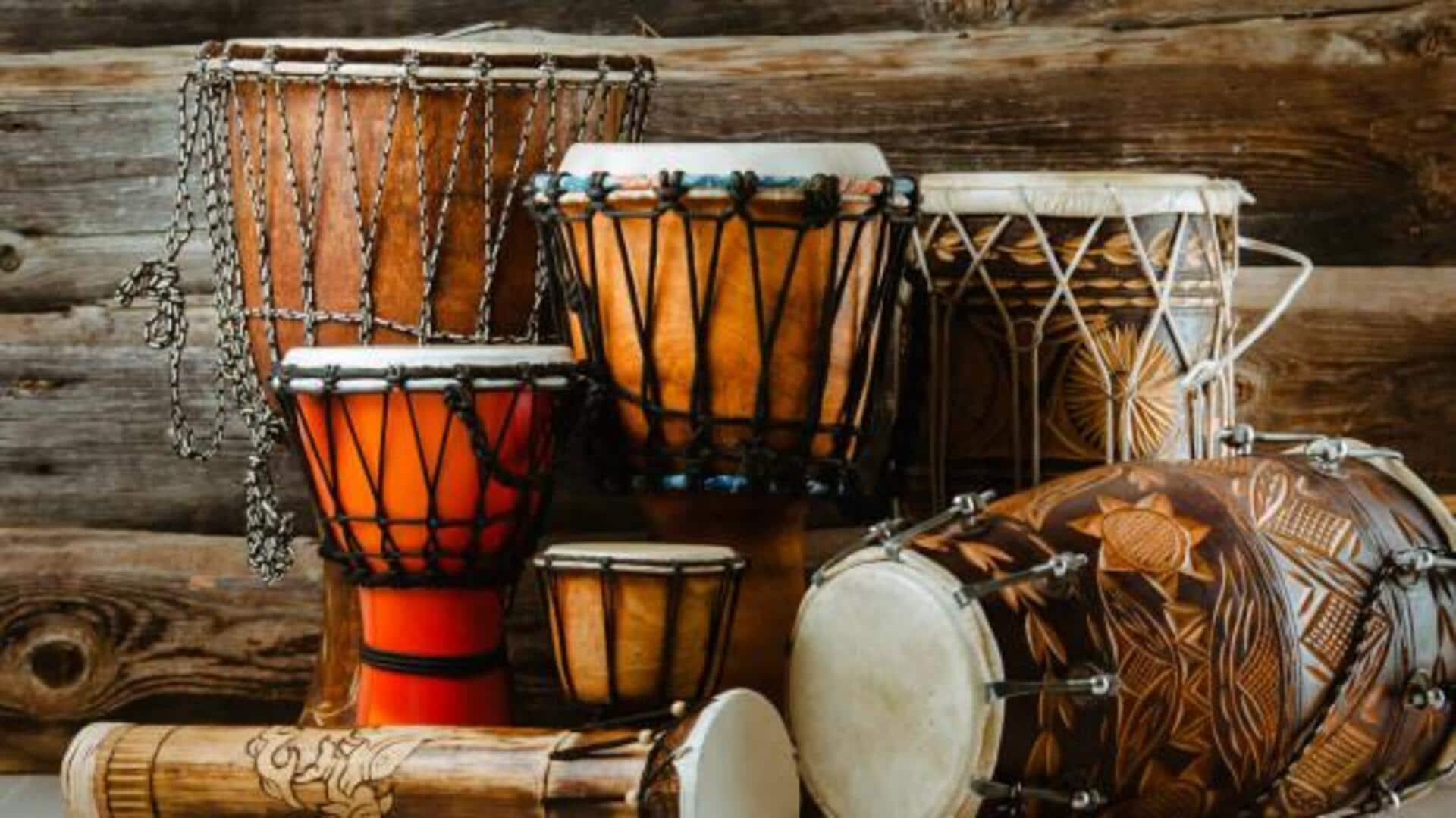
African drum-making: Techniques behind this craft
What's the story
African drum-making is a rich tradition steeped in artistry and craftsmanship. The ancient practice involves making instruments that are not just musical but also culturally significant. Drums are a vital part of ceremonies, storytelling, and even communication across various African communities. Knowing the techniques and traditions behind drum-making gives a peek into Africa's cultural heritage. It highlights the skill and dedication that goes into making these iconic instruments.
Material selection
Selecting the right materials
The process begins with selecting appropriate materials, primarily wood and animal-derived materials. Different types of wood are chosen based on their acoustic properties and availability in specific regions. The material used for the drumhead is typically sourced from local sources, ensuring durability and sound quality. This careful selection process ensures each drum produces a unique sound that resonates with its cultural context.
Carving process
Carving techniques
Carving is a vital step in drum-making, demanding precision and expertise. Artisans utilize traditional tools to carve the wooden body of the drum, often weaving in intricate designs that reflect cultural symbols or stories. The carving process not only impacts the aesthetic but also contributes to the sound by determining thickness and shape.
Assembly steps
Assembling drum components
Once carved, assembling the drum requires attaching the drumhead to the wooden body using ropes or pegs. This step demands a certain level of skill to ensure it has the right tension for the best sound. While the process of assembly may differ slightly across regions/tribes, it generally follows the same principles to ensure consistency in quality.
Tuning techniques
Tuning for perfect sound
Tuning is an essential step in the art of African drum-making, where artisans carefully adjust the tension by tightening or loosening the ropes around the drumhead. They do this painstakingly to reach an ideal pitch that suits the performance needs and musical traditions of their community. Perfecting the sound is a product of intimate knowledge of the drum's materials and a steady hand, ensuring each drum rings true to its intended tonal qualities.